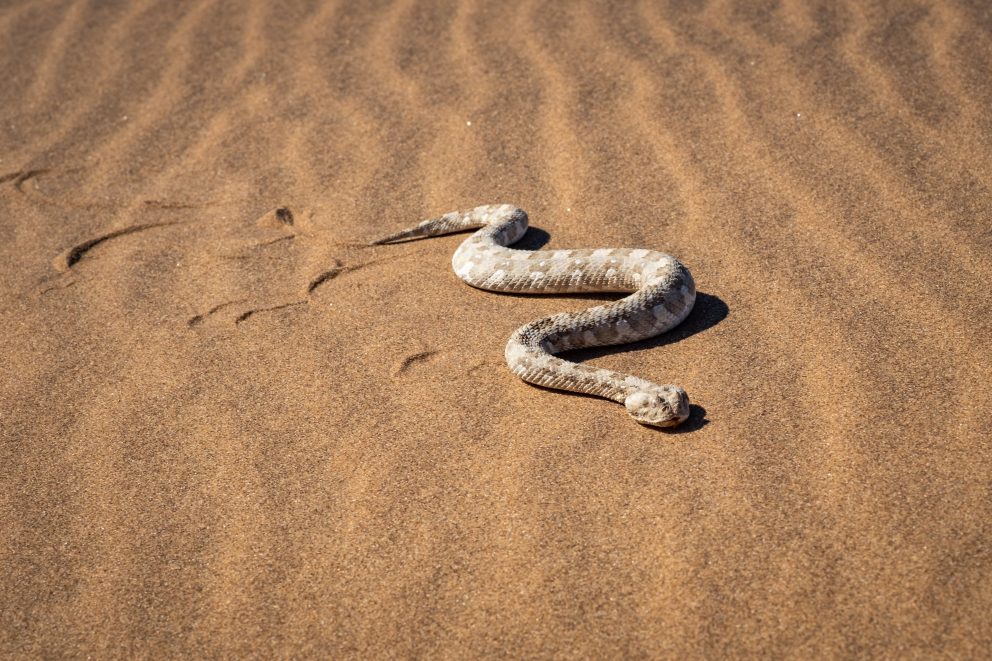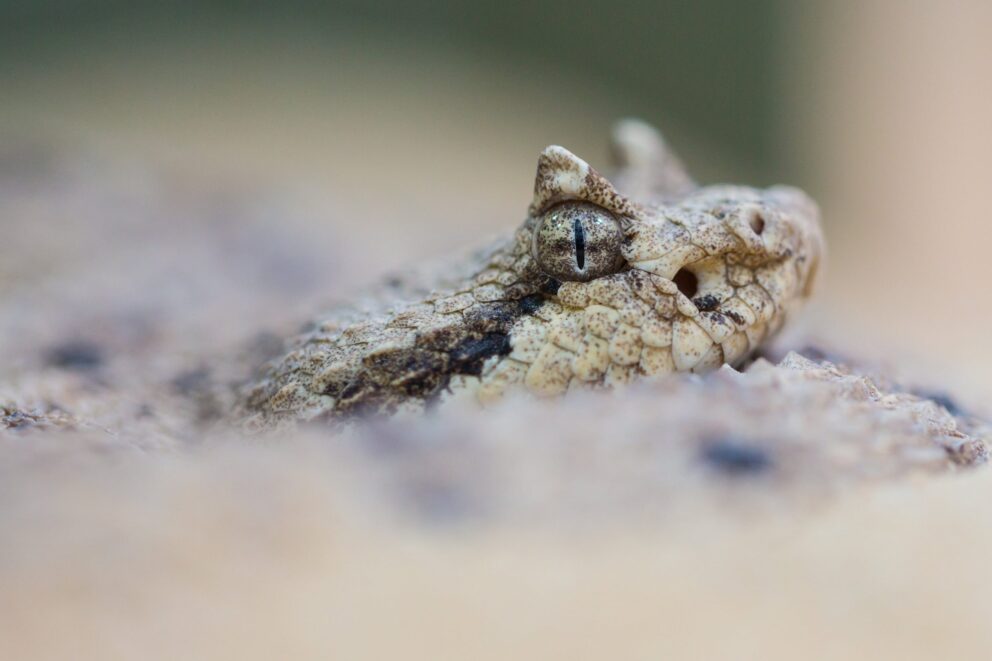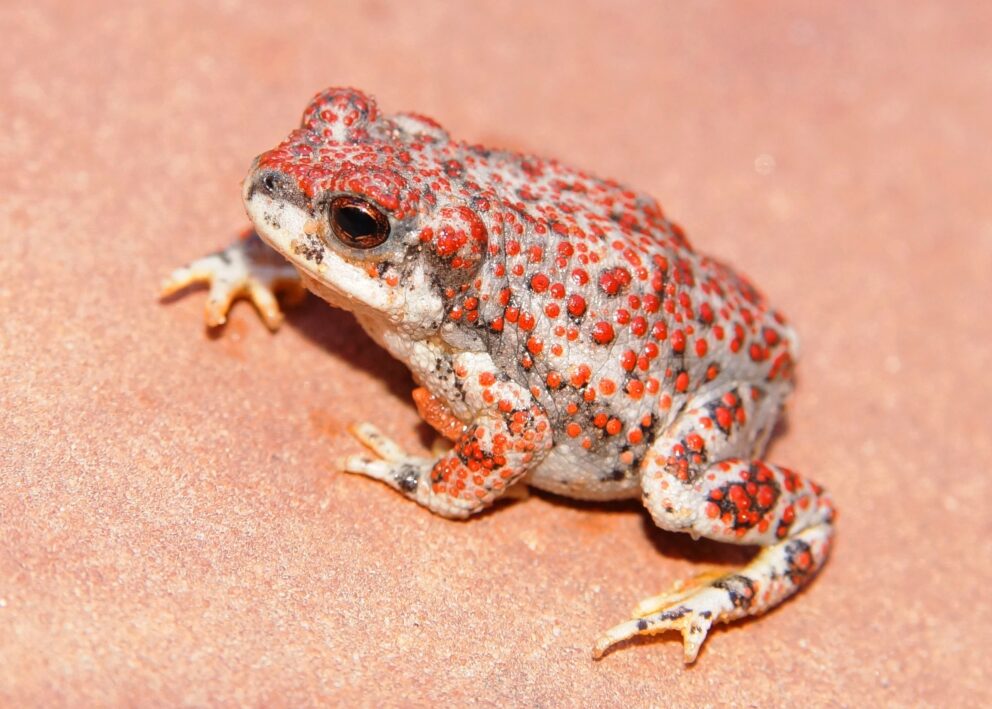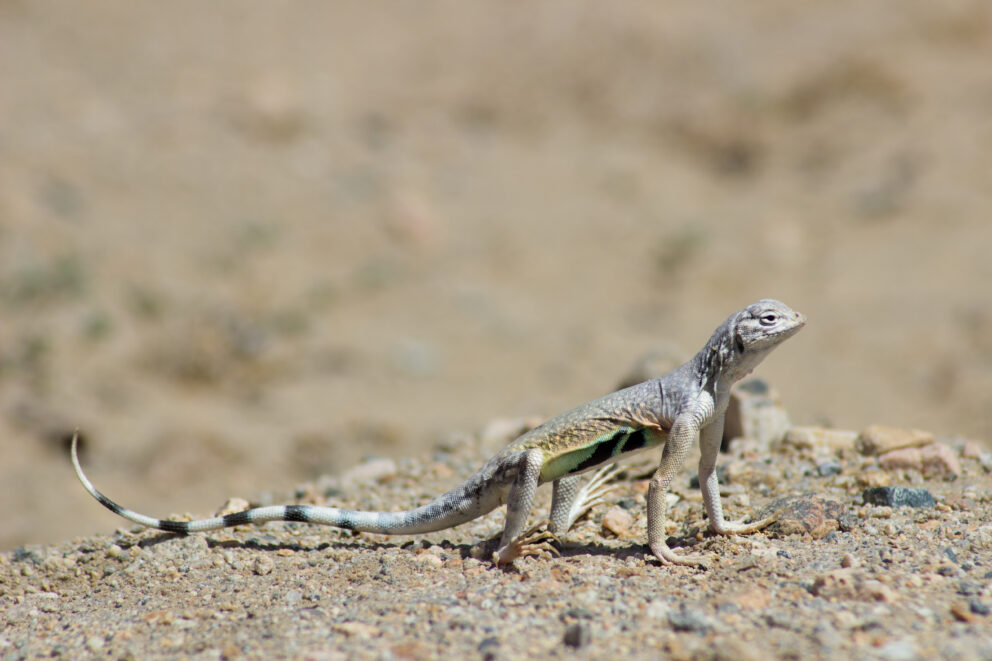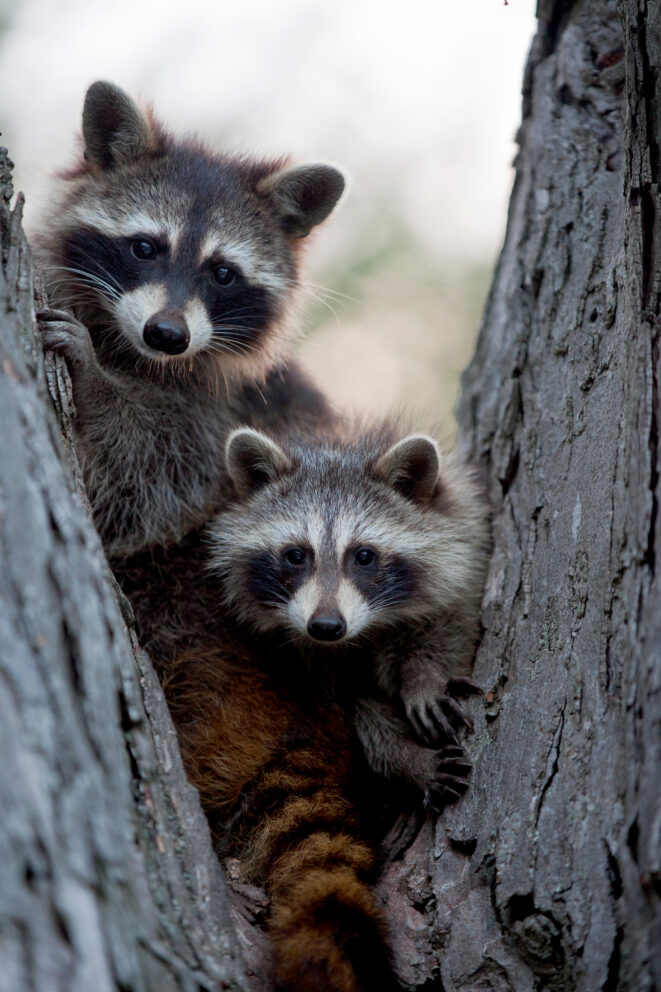- SCIENTIFIC NAME
- Crotalus cerastes
- CLASSIFICATION
- Reptile
- LIFE SPAN
- 5-10 Years
- SIZE
- 17-33” | 0.22-0.7lbs
- STATE CONSERVATION STATUS
-
- Priority Species
- Unprotected
- FEDERAL CONSERVATION STATUS
- Least Concern
- GAME STATUS
- Non-Game
- Washoe
- Humboldt
- Pershing
- Churchill
- Mineral
- Lyon
- Douglas
- Carson City
- Storey
- Elko
- Lander
- Eureka
- White Pine
- Esmeralda
- Nye
- Lincoln
- Clark
Habitat & Range
The Sidewinder generally prefers sandy terrain. In the Mojave Desert, snakes concentrate near sandy washes and areas of relatively dense vegetation where mammal burrows are common, though in other areas the Sidewinder has been found to be more common where vegetation is sparse.
- Mojave desert
- Sand Dunes
- Warm desert riparian
Threats
- Habitat Loss
- Loss of Prey
Natural History
The Sidewinder preys mainly on lizards, pocket mice, kangaroo rats, and other small mammals. In many areas, lizards make up the bulk of their diet. Occasionally, a Sidewinder may take small birds and other snakes. These snakes are active foragers, but they are also known to wait for prey under brush and partially buried in sand. This snake is primarily nocturnal, but in the early spring it is active at dusk and even occasionally during the day. It sometimes ceases activity in mid-summer when temperatures are highest.
The Sidewinder is a rattlesnake and like other rattlesnakes they have live birth. Most reptiles are known for their leathery-shelled eggs, but rattlesnakes skip the eggs all together. Sidewinders give birth to between four and eleven live young. They do not receive any parental care after birth.
Fun Facts
